Build and Feel, Ergonomics, etc.:
It actually feels rather plasticky and cheap for the materials used for the outer shell of the 550D, as this holds true for any Canon entry level DSLRs ever made anyway. Putting aside for that really cheapo feel of it, the build quality and workmanship of the 550D is actually not bad, or, I would say it is really good actually. At least the closed built-in flash can be closed tightly and there is no play. I had inspected three different units of the 550D from different persons and all units are well built. So, it is not a coincidence. All 550D bodies are made in Japan, when it is compared to those Nikon DSLRs that are made in Thailand, including the D300s and D700 (and below), the 550D actually have just tighter design and QC tolerance in some areas, e.g., I have never seen a D700 that its closed built-in flash is tight and without large play, which is a real annoyance, at least to me! :-o
Holding the camera is indeed secure and comfortable, there are anti-slipping rubber at both the thumb position at the body back and at the grip front, which is better than the K-x, as the K-x has no rubber at the thumb position, unlike the K-7 (which has it).
Operation Interface and User-Friendliness:
Coincidently, the designed operation interface of the 550D is 90% similar to that of the K-x but I would say K-x' is a bit more refined and thoughtful, for both the software and hardware, which is somehow better. Just say the mode dial of the K-x can be turned in a cyclic way but 550D's cannot. And, the worst thing is that the Movie and the PASM mode positions are located too far apart on the 550's mode dial so that everytime when switch between those still picture shooting modes and the Movie mode, it is rather inconvenient. To give you a better idea for what I am saying, I took two pictures of the mode dials of the two cameras, see below:

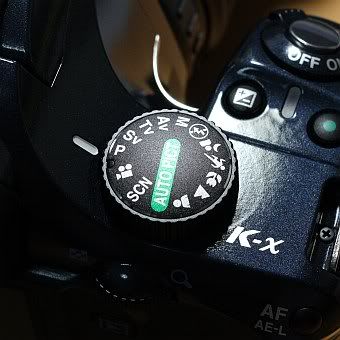
Viewfinder:
I felt that it is just a bit smaller and less bright than the K-x' one. Well there are "red dots" for the AF point indication, but I don't like its cheap representation and appearance, i.e., the dots and red light are blur and dim as projected. Yet fortunately, the green numeric display at the bottom is bright, large and easy to read. It is both larger and brighter than the K-x' and thus could be read better under bright sunlight outdoor.
Metering Accuracy:
I'm totally not impressed with Canon's new 63 x 2 segment metering system used in the 550D. It is not so consistent and reliable as I originally expected from what the specifications tell and such an advanced and latest design would give for the results. It overexposes and underexposes more than the plain old villa Centre-Weighted Average (CWA) metering mode in many more difficult and non-standard situations. I could confirm this and quite sure for my this conclusion and comment as I had experience the first week I used the camera. The new evaluative system does tend to overexpose the subjects, even for normal and typical scenes which should not be a problem even for traditional CWA metering. Despite what it is claimed and marketed by Canon, the new system is still colour-blinded to darker green objects which has a low reflectance and hence more overexposure would result. So, I just gave up and switch to the CWA, which is more stable, reliable and accurate, although it has no intelligence of any. Although the CWA is "stupid" but it is just predictable - a very importance thing for controllable metering and exposure. In fact, I found the 16-segment evaluative metering of my K-x does a better job than the 550D and so does the old 35-segment system of my old 5D. Well, after all, big disappointment here - it seems that all entry level Canon DSLRs have never been able to give more accurate metering without blowing the highlights! :-( And the worst thing is that most of the time powerful specifications just mean *nothing* against what they actually perform! That is, those advanced systems are unbeatable on paper but in the field they just suck! :-o :-(
Well, if it is not just that the evaluative metering system of the 550D is just worst than that of my K-x', I might buy one myself actually! :-)
Colour Response:
Choosing a colour-accurate Picture Style is always a headache with Canon DSLRs from my practical experiences over years, this is true no matter with my old and really expensive 5D and now up to the 550D. Sometimes I just wonder what is going on with Canon's engineers! The Faithful PS has never been anything *faithful* and neither does the Neutral Mode. Not Portrait Mode in any Canon DSLR that I can use to do portraiture and the skin tone representation are terrible! I would rather Portrait PS of Canon DSLRs to shoot landscape to get better results for another application! Yet fortunately, I still found that this time the Standard Mode of the 550D is actually colour-accurate and produces more favourable colours to my like, despite that it has (much) higher contrast and higher saturation by default than reality. So, I just tuned down both by one step. After that, the contrast and colour are still a bit more when compared to real-life but it is fairly good and close enough. Sometimes, we want to eat some MSG, right? Maybe a little bit of the MSG is good and do not big harm? ;-) The skin tone reproduction with this setting is yet found to be fairly good, and is far better than what the Portrait, Neutral and Faithful could do, IMHO (but which is ridiculous, also).
Then, one may wonder if downloading additional Picture Styles from the Canon websites (or anywhere btw) would help. Unfortunately, I found that the old PSes just won't work well on new digital EOS bodies! :-( Just say, the Portrait Snapshot and Portrait Studio both work quite well in my 5D with L lenses, but in the 550D all colours and even the reproduced contrast are in a mess and the outcome and colours/tones/contrast/lightness response are all very strange! So, I gave up again!
It just seems that the old Picture Styles were just calibrated and built with particular camera bod(ies) and lens(es), the profiles are actually not much portable although software-wise it is compatible and can be loaded.
Below are some screen captures of uploading Picture Style Files into the camera via the latest EOS Utility (Version 2.8):

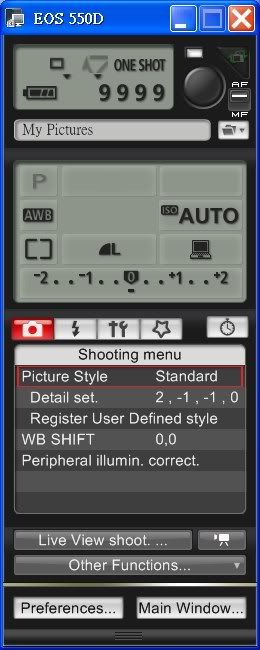
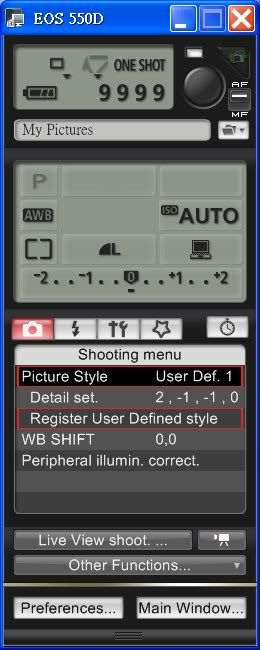
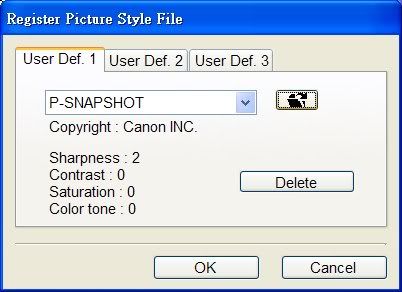
Anyway, I do like the colours reproduced by the 550D for my above PS and settings chosen (i.e., Standard 2, -1, -1, 0). Do note that I've tuned down the "Sharpness" (actually it is just digital sharpening/unsharp masking) one step down to "2" also, as I think this is the best compromise between sharpness and sharpening artifacts. And, I found that with the proper settings of the above, the colours rendered by the 550D is more solid than what my K-x could do, which I do quite like indeed.
To fine tune the Picture Style settings, go into the second tab of the set-up menu, choose the picture style and press the "DISP" for detailed settings:
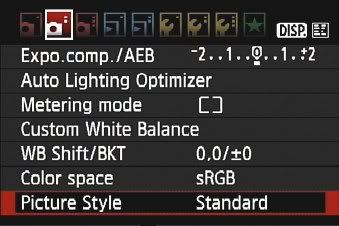

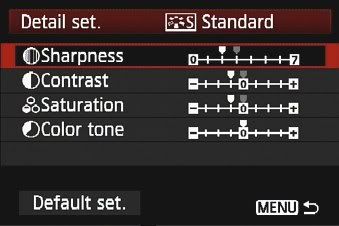
(Auto) White Balance:
I have no complaint with the WB, no matter sunny or cloudy outdoor, fluorescent or tungsten indoor. I believe you can judge this with the samples I post in the samples gallery below. It does not usually adjust the colour temperature in a "the Whiter is Better" way. but it does reproduce images that look close enough to what my eyes could see for most situation. Three examples shot:-

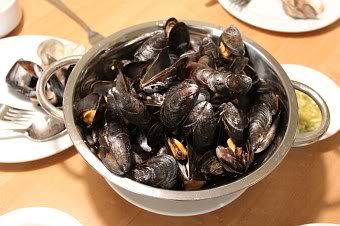
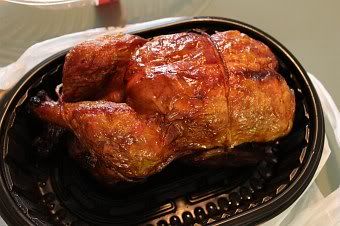
(Click to Enlarge: The Water Melon shot was taken indoor at a supermarket with mixed yellow and white fluorescent lighting and under shadow! Amazing?! The food shots are under tungsten lighting, the mussel shot was at ISO 3200 (which I accidentally selected, the grilled chicken was taken in a dimmer condition at ISO 1600.)
Dynamic Range:
With the default PS and "colour" settings, the DR suffers and the range is limited. I did some side-by-side tests and found that the DR is just improved with contrast and saturation to be set one step lower, as just have been mentioned above. Anyway, I found that my K-x seems to have a slightly wider DR for the set of optimal settings that I chose for it .
Resolution / General Image Quality:
The resolution of the 550D is very high, especially when using ISO speeds at 400 or below. The per pixel sharpness is very good and the image formation is solid, better than the K-x indeed.
Lens Quality:
The kit lens is in fact quite sharp, especially when it is stopped down, and it is acceptable wide opened, provided that the focusing (AF) is accurate. This is against what many Cananians misbelieve that the kit lens is a piece of junk, which I don't think so and totally disagree with. In fact, I found that the corner sharpness of the kit could be even better than my 17-40L at the same stopped down aperture and at the widest side, say, at 18mm f/8. After all, the general image quality of the 550D standard kit set is very high, as you can verify this with my posted large samples in the "Samples" section below.
The flare control is somehow crappy, though. See this example, there is a bright background but the sun is just even not in the frame, but the outcome suck somehow! :-(

(Click to Enlarge)
Frankly, the flare control weakness could be true for most Canon lenses, even for those expensive L lenses. As far as flare resistance is concerned, Canon lenses in general cannot match with nor even come close to Pentax lenses, which really shine with their SMC coatings, especially the Ghostless edition(s).
High ISO Performance:
High ISO image quality is good after I set "High ISO NR" to "Low" than the default middle strength setting, so as to retain more the subject details. With the "Low" NR setting, the noise is still acceptable IMO. If I have to choose between any (more) loss of details and to live with some more noise, it is just a no-brainer. See this example, the noise/details is in compromise, I believe:-

(Click to Enlarge)
In fact, I found that the noise handling of the 550D seems to be more advanced and mature than what the K-x could do. The K-x eliminate noise with the image and details "dissolved" altogether which is just more destructive. In contrast, the 550D does have better noise structure at high ISO speeds, with the Low NR setting. Last but not least, also don't forget the 550D has an 18MP pixel count, which is 50% more than the K-x, which has 12MPs only.
IS Performance:
See also the above example shot, which was made handheld at 1/10s. I think the IS does perform well with the kit lens and it does do its job. The film equivalent angle-of-view is 29mm, with an actual focal of 18mm, i.e., 18 x 1.6.
Focusing Speed and Accuracy:
As with any Canon DSLRs, I found that the AF speed and performance is just a non-issue which is just more than adequate for typical shooting requirements for average users. It is fast and decisive for most of the cases. In case of low light conditions, there are still some huntings and the focusing accuracy drops. This applies well for most entry level to mid-grade bodies, anyway. Nevertheless, I did find that even under bright conditions with contrasty objects, the AF of the 550D could still be be occasionally out, although the errors were small.
System Performance:
The shutter/mirror lag of the 550D is typical Canon entry level performance, which is not too quick nor too slow, which I found to be acceptable for general shootings. The mirror action is yet gentle and is far better than my K-x which should have more mirror vibration and felt coarse. In fact, the mirror/shutter action of the 550D felt much like my MZ-S, which is much refined, although the shutter lag is not particular shorter with quicker response. On the other hand, the K-x seems to have a slightly shorter shutter lag but it is more vigorous. On the other hand, the 550D does not have a high frame rate and in practical use, there is a clear difference, i.e., the K-x is faster. The 550D has more total number of burst in a chain, though, and the K-x has less.
LiveView:
LV Contrast-Detection AF of the 550D is now faster and somehow improved than previous models and upper model as well, i.e., the 5D MkII. Whilst it is faster, sometimes it would still miss the target and hunt back as the AF system itself by no means knew that where it should go and would go! I think its speed is somehow in between the Pana GF1 and the K-x (which just acts like the old 450D of Canon and is slower).
Below you can see a demo of the CDAF under the LV mode of the 550D, you can compare this against the CDAF of the K-x in my previous K-x full review for the speed difference (besides, you can hear the shutter sound at the end):
(URL: http://www.youtube.com/watch?v=aZIeUG0zq5k)
As I have been saying for long, the LV is actually a welcome and useful feature. It opens up more opportunities in framing and shooting. See the pair of example shots below, I just could not come closer if I had to use the optical finder for framing or that I had to guess. With the LV, I was able to get a better shot, at the a closer focusing distance, the kit lens was set at its longest reach of 55mm, already:


(Left: No LV; Right: Using LV - Click to Enlarge)
Besides, as you can see from the above, the bokeh of the kit lens is actually very nice.
Movie Recording:
The H.264 compression format has one advantage of saving memory space but it creates many problems as a result of the compression. First of all, Windows and Windows Media Player (even the latest version of 11) does not have the specific Codec for decoding the movie by default. In order to playback the movie, one has to install QuickTime player version 7 or above. For smooth playback of just a standard HD 720p video, the hardware processing power requirement is high and for Full HD 1080p videos, the processing power requirement is ridiculously huge. In contrast, whilst the Motion JPEG (the only format as adopted by the Pentax DSLRs) is large in size for the recorded videos, there is no compression and loss in video image quality and most important, playback is much easier for most machines and it is more old-machine friendly. Very unfortunately, there is no option for the 550D for the user to select to record movie in Motion JPEG. On the other hand, the Pana GF1 has, but the strange thing is that Windows still cannot play the movie back even if it is in "Motion JPEG" format and bundled software or the QuickTime player must be installed. So, I must give a credit to Pentax for the excellent software compatibility of the K-x and its Motion JPEG provision as well. I do like Pentax can give a compressed format option, though, say, MPEG4 which is compatible to the Windows Media Player by default.
Well, on the other hand, if you use Apple/Macintosh system, the case is just opposite. QuickTime MOV is the format it can playback by default, anyway. (But I still believe that Windows is still the mainstream for most users.)
Nevertheless, I just often wonder about the longevity of those movies which are encoded and recorded in different format nowadays. Years or decades later could us still be able to install the Codecs nowadays to play them back? So, using the most primitive format in open standards would not be a bad idea.
Next, let me talk something about other additional options and features of the movie recording of the 550D. Firstly, it has many manual options for choosing the WB, ISO, Tv and Av. Secondly, the user can still take picture during movie recording (using the shutter release button, still). Thirdly, CDAF can still be engaged if required and there is an option for doing so (although focusing noise and hunting will be be recorded):
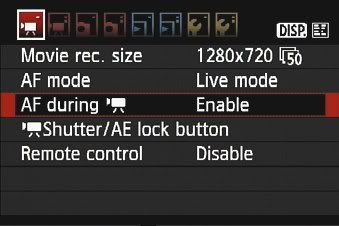
As you can see from the above, I enabled the CDAF option and changed it from the factory default of being disabled. How can I take a sharp still picture if I could not re-focusing?
Furthermore, I add grid lines in the option (fewer lines one) so as to help composition and levelling during movie recording:
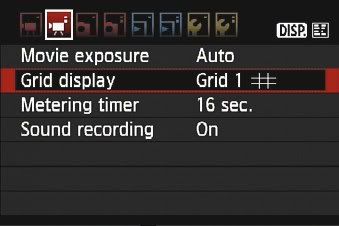
Battery Life:
The power source is reliable and durable. I have not much to worry about, in contrast to what I have to do with my K-x from time to time! :-(
"Auto Lighting Optimizer" and "Highlight Tone Priority":
I turned off these options as I think they create more problems than what they worth. Proper metering and exposure control should be the way to go and for better DR, we have to tune down the contrast and make a less steep tone curve than what Canon gave us by default!

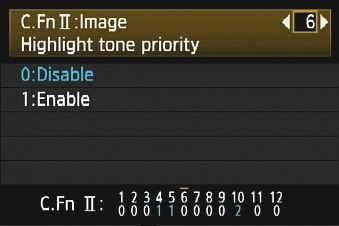
"Peripheral Illumination Correction":
Actually, almost every EF lens can be corrected in-camera but you have to select and activate particular lenses of yours via the latest EOS utility (which supports the 550D) before you can select and enable the function via the camera's menu:
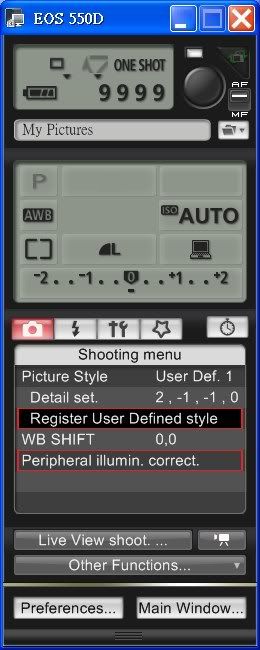
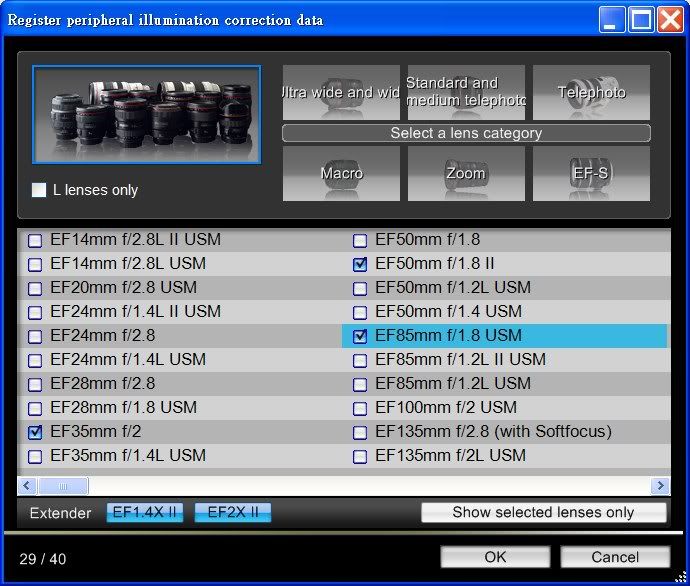
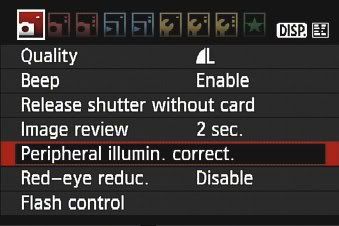
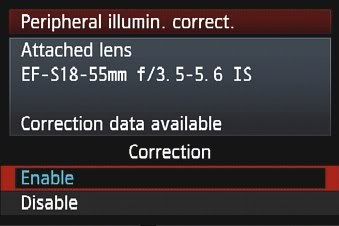
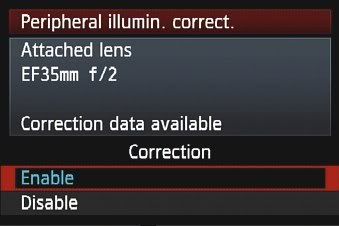
The Screen Colour:
I choose Colour Scheme 4 as it won't hurt my eyes when I operate and view the screen at darker ambient light conditions. The default scheme may look a bit smarter for the graphics and may yet be slightly easier to read very bright outdoor under the sun but under which the LCD is difficult to read anyway. Furthermore, I suspect some battery power could be saved by displaying a dark background image than a white one for the operation interface (which are on for most of the time during operation) if the LCD driver is designed to control the back-light power dynamically:
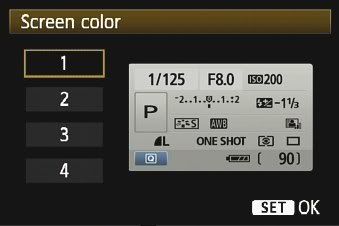
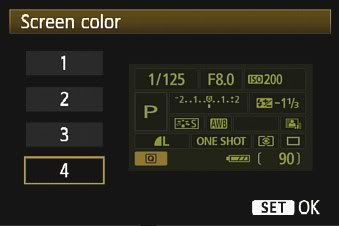
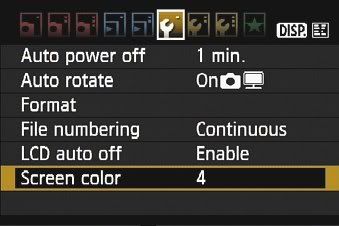
World Time:
The 550D does not support World Time / Dual Time. So, when you travel, you have to change the time manually (which is somehow inconvenient then):
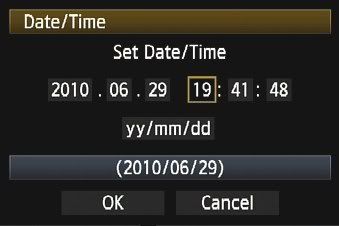
Mirror Lock Option:
The 550D has a mirror lockup option that can be activated via one of the Custom Functions, not bad for an entry level DSLR:
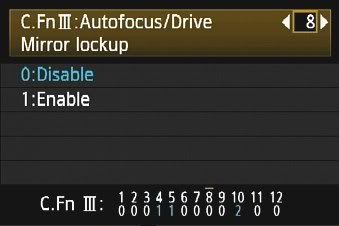
2. My Best "Optimal" Settings (Default for General Shooting Purposes)
With all backgrounds I have brief above, here is a quick summary of the settings used for/in "my" camera:-



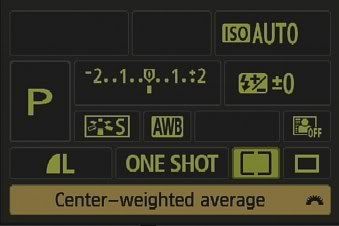



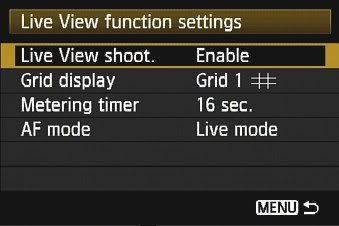
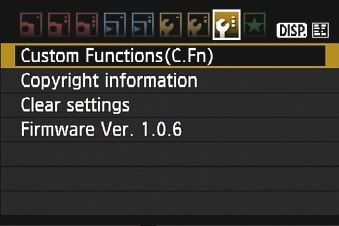
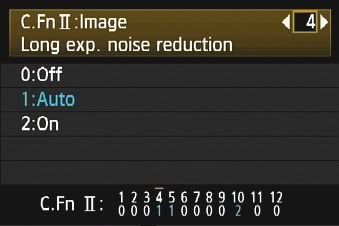
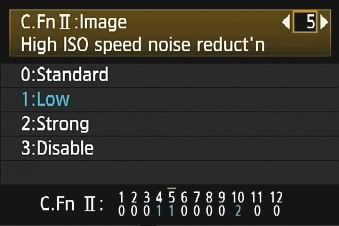
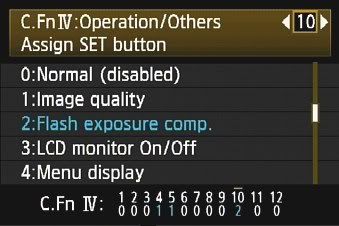
3. Samples
Copyright Notice: All images and movie clips are copyright by me and no unauthorized use of any is allowed prior to my written agreement.
I) Still Pictures
All pictures were produced using the 550D and the kit lens 18-55 IS solely (although I have another six Canon EF lenses myself, 3 L zooms and 3 primes), with the single universal set of settings I have briefed in the above (some with certain exposure compensation as appropriate).
The pictures are all resized to 3,999 pixels in width, all EXIF data are preserved. (Warning: Large Files)
http://smg.photobucket.com/albums/v313/RiceHigh/550D/Full_Samples/?start=all
Remarks: Full size un-retouched samples are also available for download in the above, just select image and download them one by one if desired, using the Photobucket option (under "download" and then select "high res image").
Happy measurbating! You can always verify if what I have told in my this review are true or not, by yourself! :-)
II) Movie Clips (via YouTube)
All movies were recorded using fully automatic settings by default, no manual override of any was applied.
(URL: http://www.youtube.com/watch?v=NHZMGVRuZPY)
(URL: http://www.youtube.com/watch?v=iqbGVQhBkpg)
(URL: http://www.youtube.com/watch?v=mRvFxvYe9pc)
Acknowledgement: My special thanks to my friend "Laden" who kindly lent me his new 550D unit for use and testing for a month. Thank You! :=)
Read Also:-
Summary Matrix for Equipment Tests and Reviews
550D + 17-40L/4 Vs K-x + 16-45/4 & ISO Shootout
My K-x Full Review
My K-m Full Review